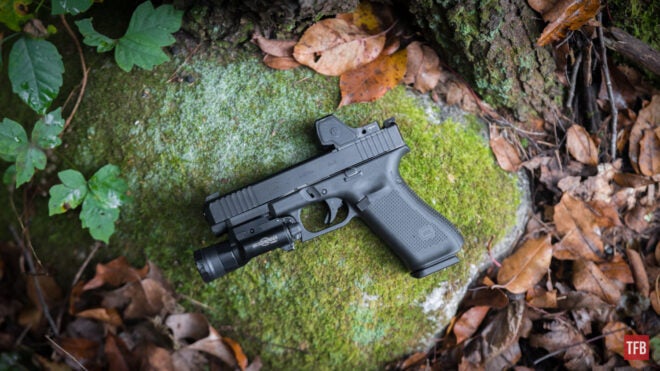I have carried a GLOCK 45 MOS every day for over a year in an inside the waistband holster. Equipped with a Surefire 300 Ultra and a Trijicon RMR, this is my perfect EDC gun for almost every situation. But I didn’t fully appreciate the power of a slide-mounted red dot until I attended a basic two-day optics training class. We’ll talk more about the training in a bit, but my gun with the RMR was the only one that didn’t suffer from sort of optic failure during the drills. Now, officially announced last month, the Trijicon RMR HD adds features and functionality – including a forward facing light sensor – to an already bulletproof optic system for pistols. Let’s take a look.
More Trijicon @ TFB:
- Trijicon Officially Announces the New RMR HD and RCR Red Dots
- NEW Trijicon Dual Defense Kit – RMR & Night Sights
- ACOG for a PCC? Trijicon’s Dedicated 9mm TA47-C
TFB REVIEW: The Trijicon RMR HD Red Dot Sight
The Trijicon RMR HD is a feature-rich MRDS that can adapt to a shooters lighting environment and withstand heavy duty use and still provide reliable service for years on a single battery. This is a worthy upgrade to any duty or EDC pistol and I am looking forward to putting mine into full-time service soon. – Pete, The Firearm Blog
Table of Contents
- MRDS on EDC and Duty Pistols
- RMR HD – Basic Technology
- RMR HD – Feature Highlights
- Trijicon RMR HD – Specifications
- Trijicon RMR HD – All Features
- Training With Slide-Mounted Optics
- Final Thoughts
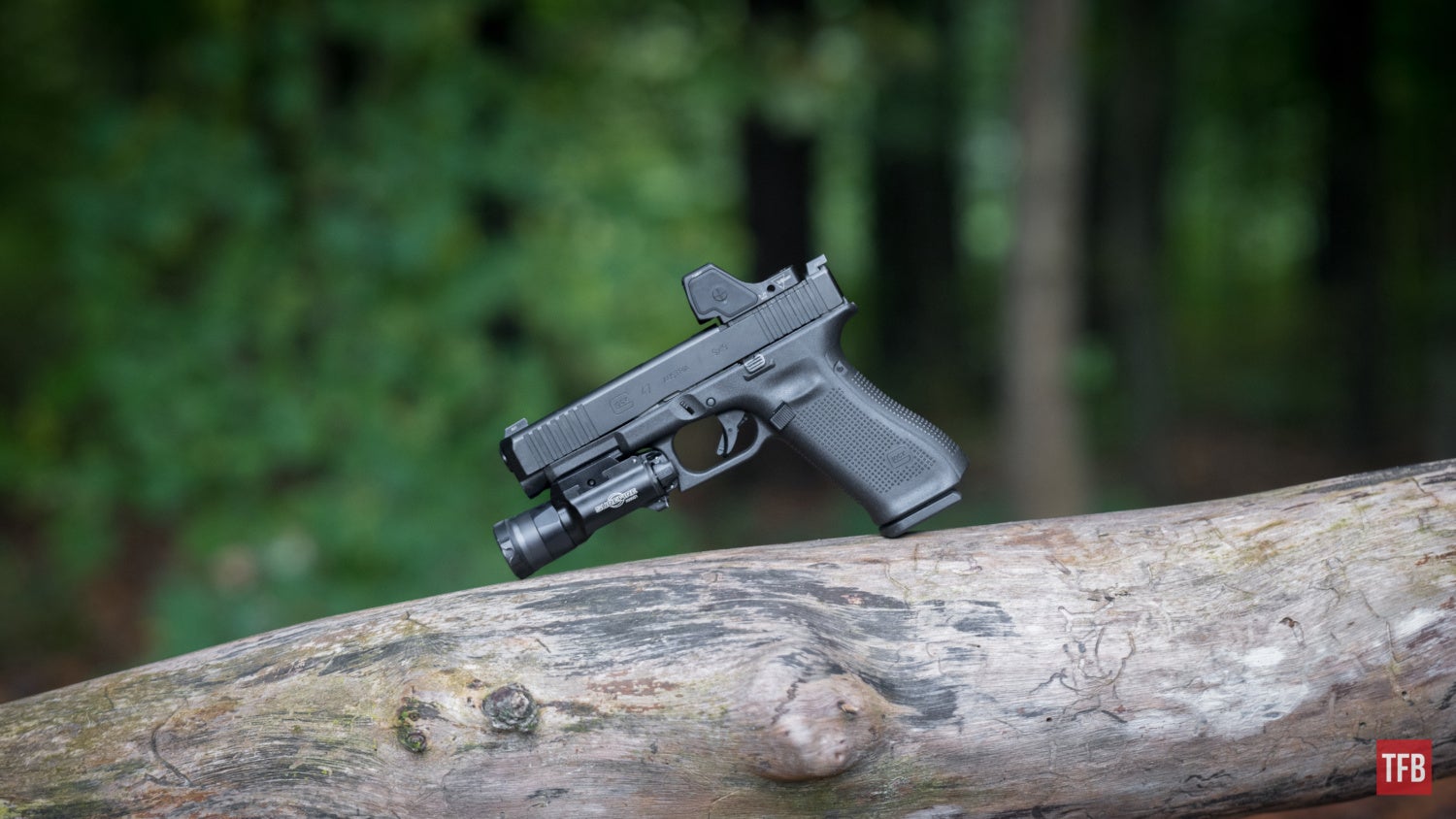
TFB REVIEW: The Trijicon RMR HD Red Dot Sight
It was not that long ago that slide-mounted optics on every day cary pistols (EDC) were seen as little more than a novelty. Reminiscent of the old ‘iron sights over optics’ argument for defensive rifles that existed between – cough – age groups, micro red dot sights (MRDS) have fought an uphill battle for the adoption for combat/duty pistol use. But sometime in the last few years we arrived at a point where MRDS are commonplace on not only duty guns at major law enforcement agencies and military units, but also on concealed carry guns in the hands of everyday Americans. And I am only specifying Americans in this context because we seem to be the EDC capital of the world.
MRDS on EDC and Duty Pistols
While the battery life on the RMR HD is an amazing three years on setting number five and the likelihood of suffering damage that disables the reticle is very low, all duty and EDC pistols should be equipped with suppressor-height sights as a backup option. Murphy’s law seems to make an entrance at the most inopportune times – dirt and debris can block the window or the emitter. Below we will discuss a few different types of failure drills you can, and should practice if you decide to rely on an MRDS.
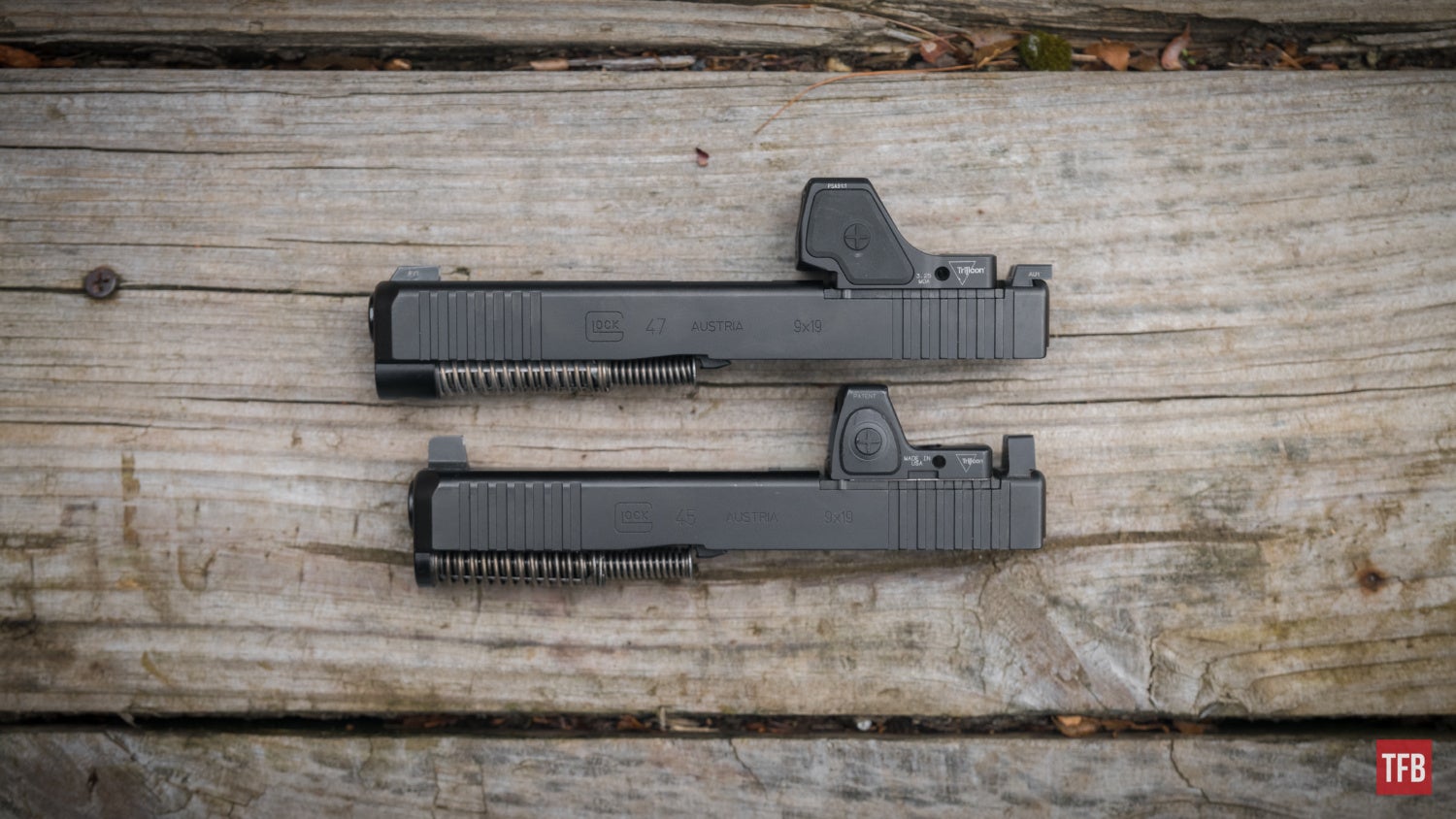
TFB REVIEW: The Trijicon RMR HD Red Dot Sight
RMR HD – Basic Technology
Without getting deep into the technical details, the RMR HD operates as an open-emitter reflex optic, meaning that a laser in the middle of the unit reflects a dot or reticle onto the backside of the window. The window is shielded from bumps or drops with a surrounding aluminum frame. The RMR HD features two buttons on each side that are primarily used to adjust brightness. Windage and elevation adjustments are made with tool-less clockwise/counterclockwise turns of two top and side mounted screw-style dials. The whole unit is mounted on the pistol slide or mounting point with two screw fasteners.
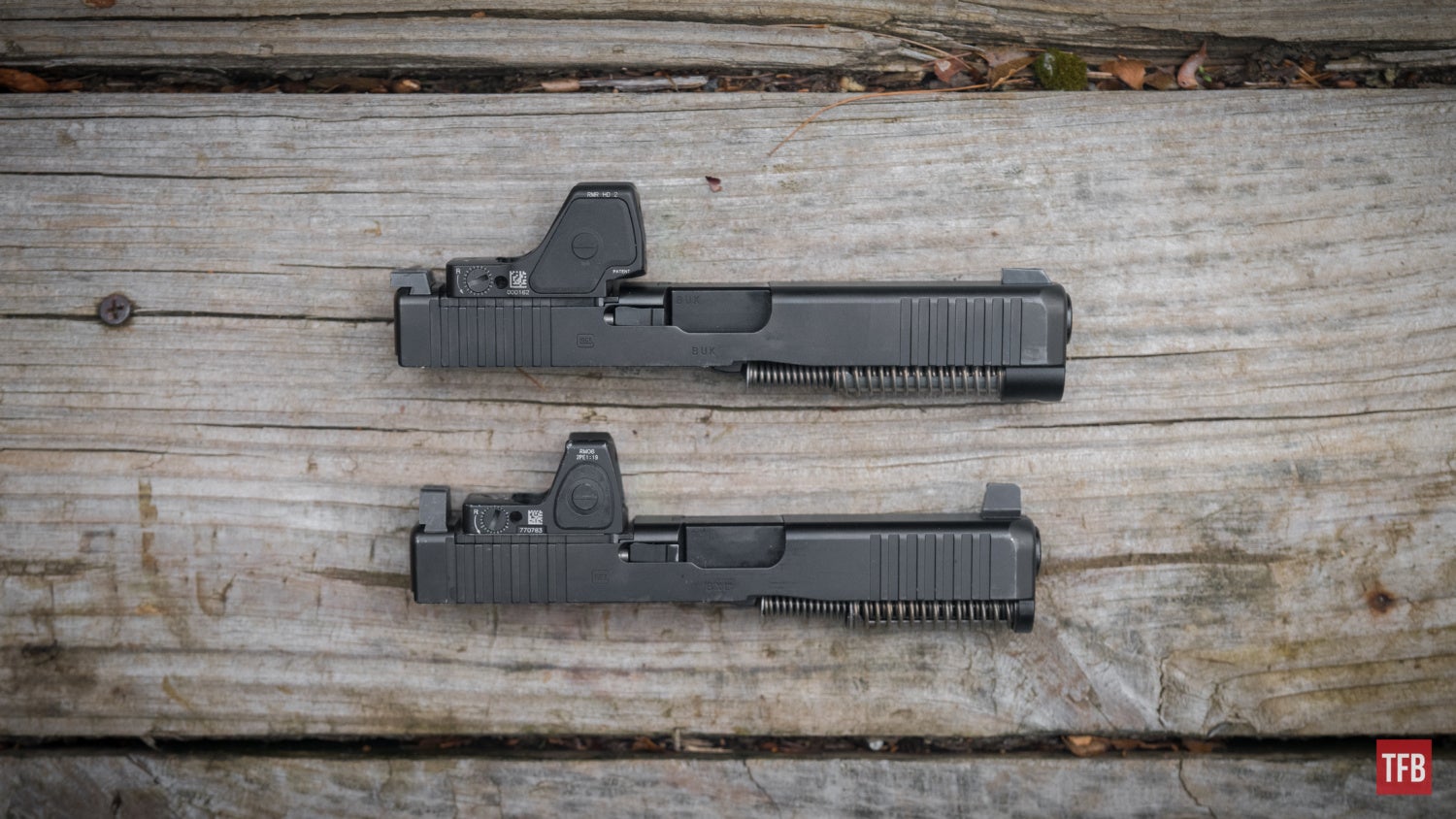
TFB REVIEW: The Trijicon RMR HD Red Dot Sight
RMR HD – Feature Highlights
Dot and Reticle
The RMR HD comes in two dot sizes – 1 MOA and 3.25 MOA. Personally I usually prefer a 1 MOA dot because at longer distances the larger dots will obscure the target for a more precise shot. But the 3.25 is a nice balance. What sets the RMR HD apart from the RMR, RMRcc, or the SRO is the option for a segmented circle reticle with a dot in the center. This is a major shift for Trijicon’s pistol optics; while the majority of the RMR series sport dots, a few of the dual illumination models have the option for a chevron. But the RMR HD is the first MRDS from Trijicon that can switch between a single dot and a dot with a reticle.
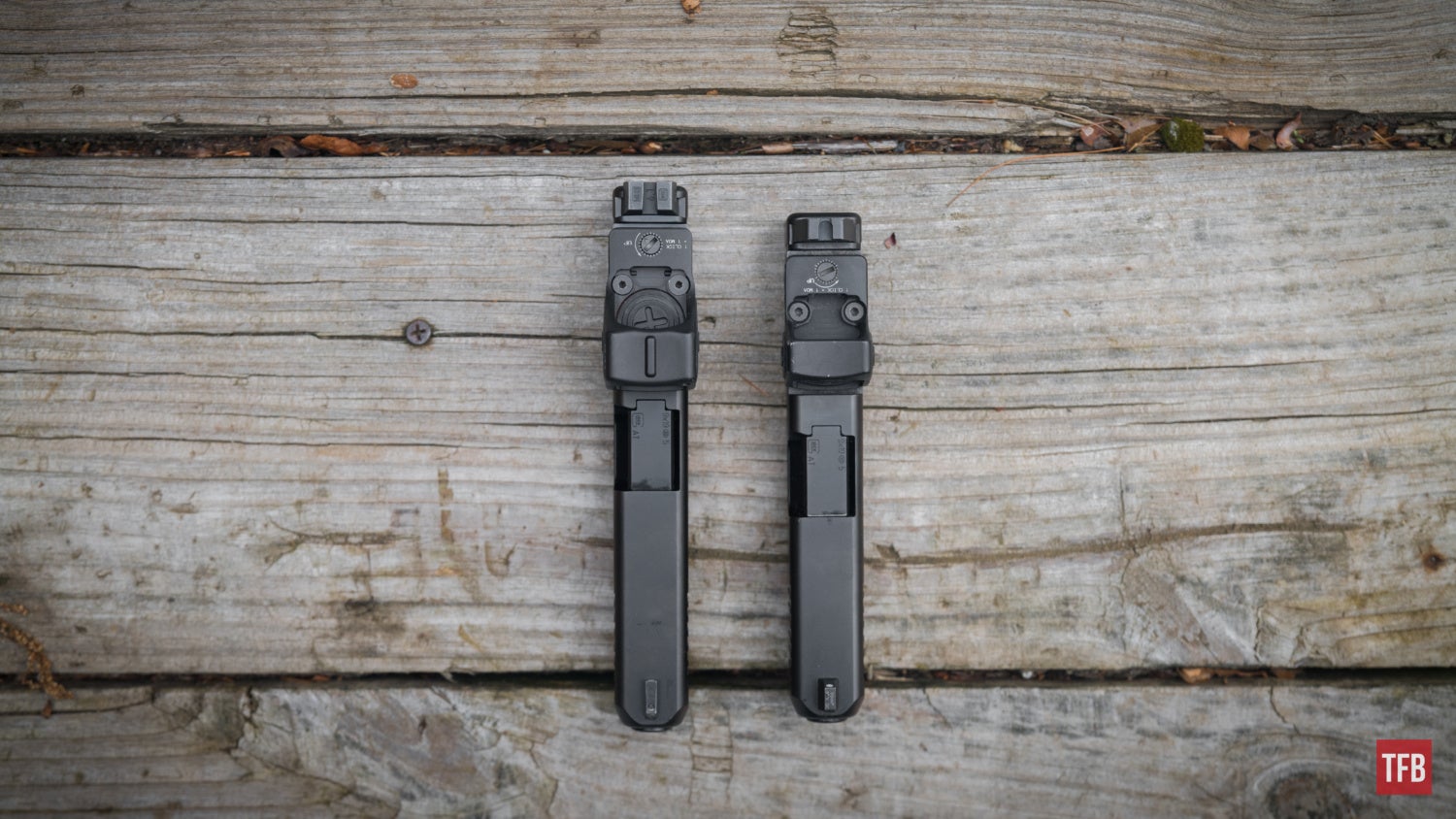
TFB REVIEW: The Trijicon RMR HD Red Dot Sight
Below is a diagram comparing the 1 MOA Dot and the 3.25 MOA Dot
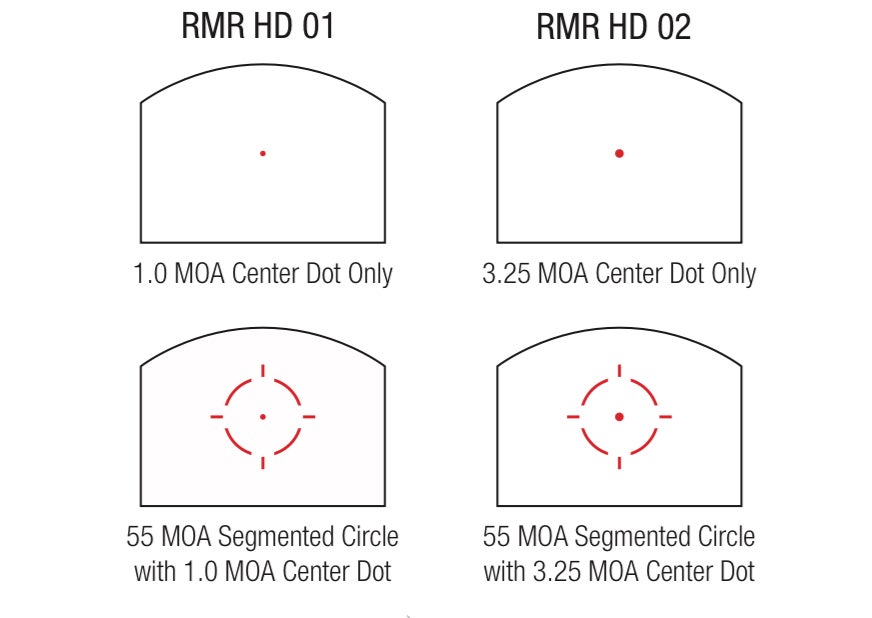
TFB REVIEW: The Trijicon RMR HD Red Dot Sight
Larger Window
The RMR HD features a larger objective window than previous generations. Below you can see a size comparison of the objective windows of the RMRcc, the RMR, and the RMR HD. It doesn’t look like much in the diagram, but the RMR HD does feel like it has a wider view than the original RMR. I tried to capture the difference between the RMR (right) and the RMR HD, but this image is slightly off perspective since the RMR slide is set a bit lower than the RMR HD slide.
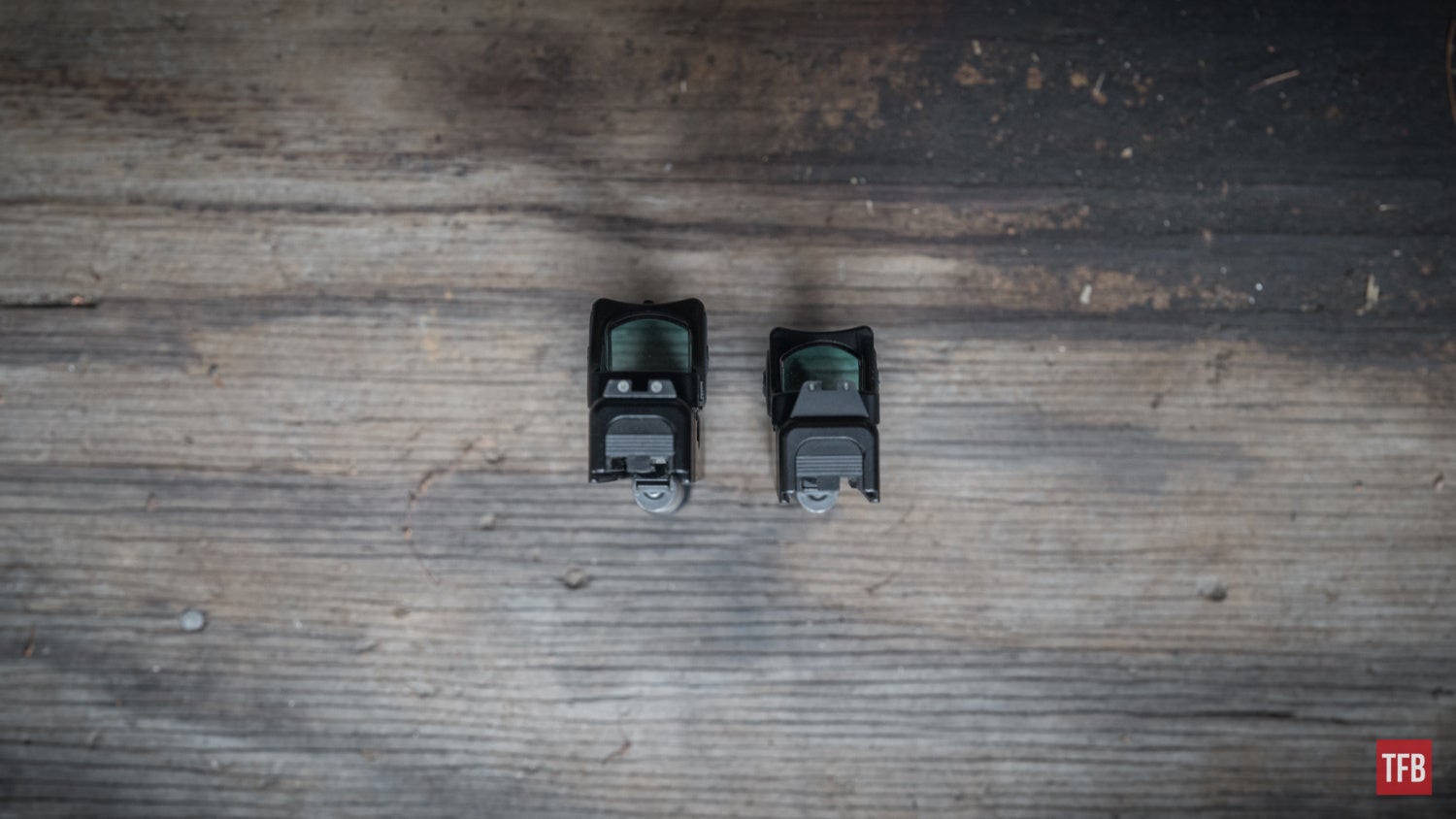
TFB REVIEW: The Trijicon RMR HD Red Dot Sight
Trijicon has included a diagram of the window sizes in the documentation on the product page.
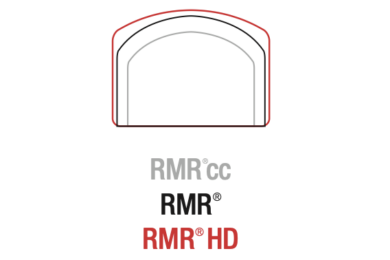
Forward Looking Light Sensor
One of the challenges of MRDS on duty pistols is transitioning from bright daylight situations to darkness. A high brightness setting for daylight will bloom in low light situations. The reverse is also true, a low brightness setting for primarily dark situations will washout or disappear under bright light, such as from a momentary switch of a weapon light. Trijicon has built a forward looking light sensor into the RMR HD that can detect the target brightness and adjust the brightness of the dot or reticle to the difference.
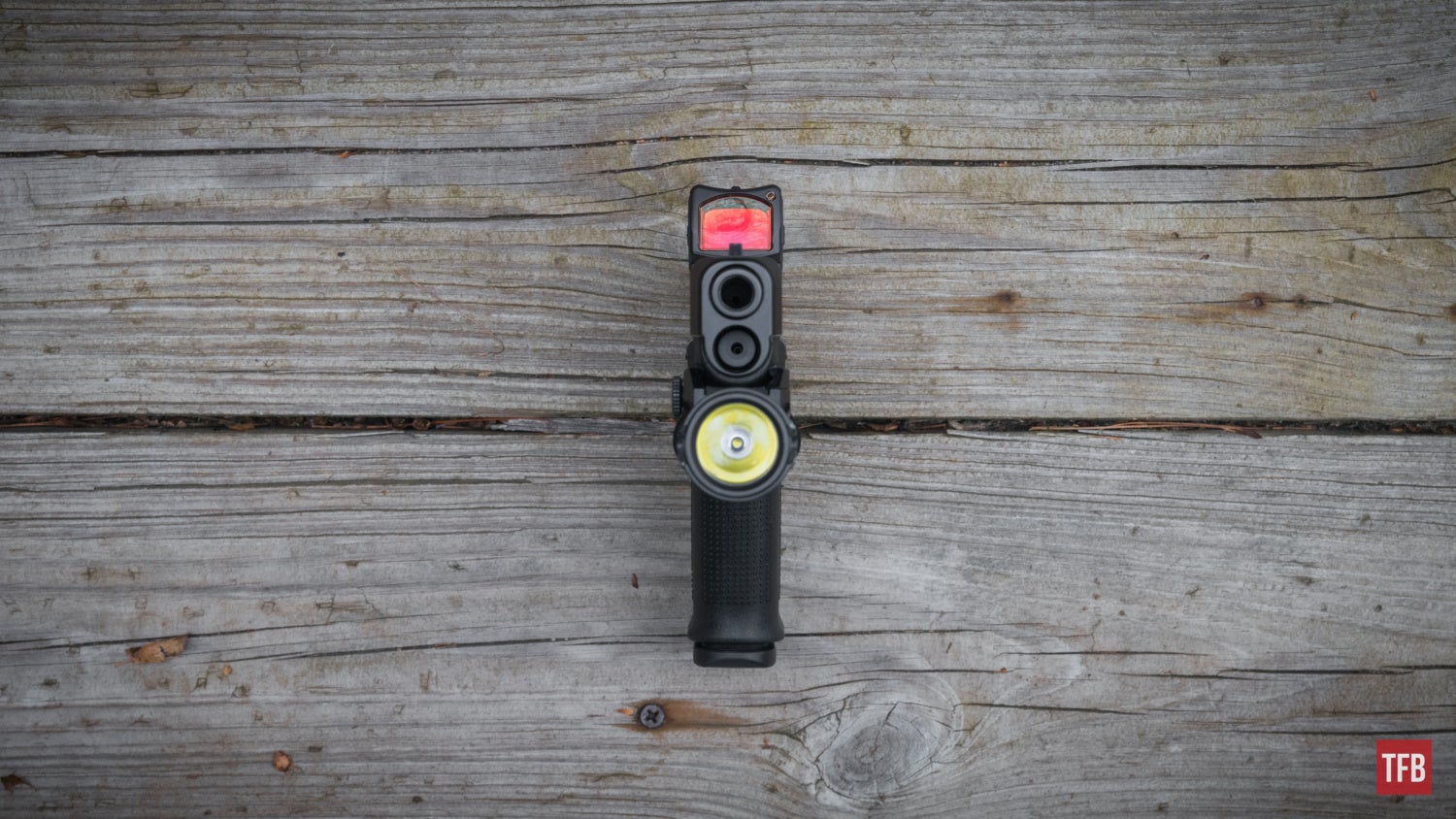
TFB REVIEW: The Trijicon RMR HD Red Dot Sight
Let’s take a look at the numbers.
Trijicon RMR HD – Specifications
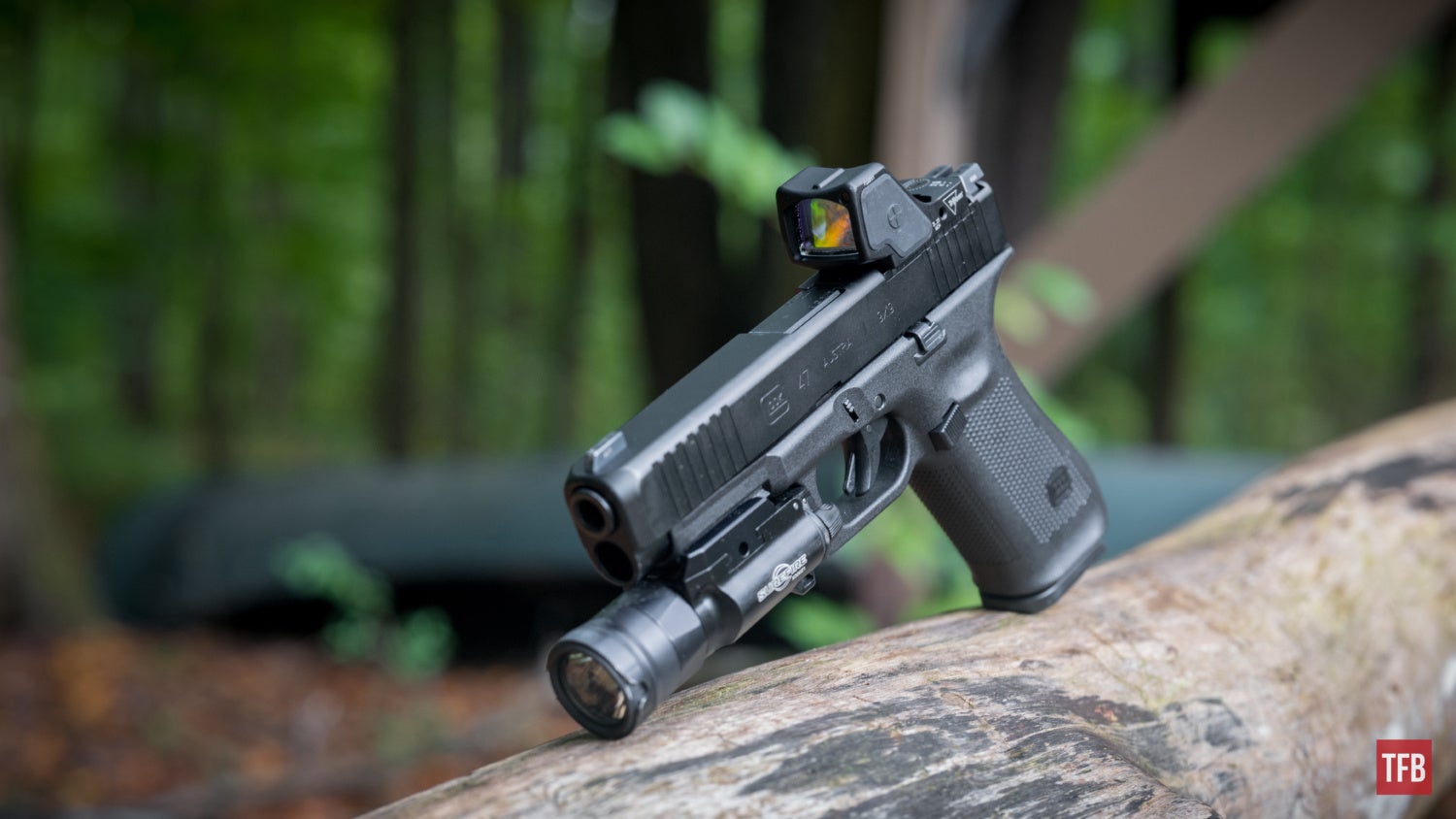
TFB REVIEW: The Trijicon RMR HD Red Dot Sight
- Manufacturer’s Page: https://www.trijicon.com/products/product-family/trijicon-rmr-hd-reflex-sight
- MSRP: $849
- SKU: RMHD1-C-3200001 (1 MOA) RMHD2-C-3200002 (3.25 MOA)
- User Guide: Click here
- Holster Compatibility Check: www.Trijicon.com/HolsterCompatibility
- Battery: CR2032
- Battery Life: 3 years continuous use on setting 5, dot only
- Illumination: 9 Brightness settings, 3 night vision, 1 super bright
- Length: 2.15 in
- Width: 1.27 in
- Height: 1.19 in
- Weight: 1.69 oz
- Adjustment: 1 MOA per click
- Adjustment Range: 135 MOA total travel
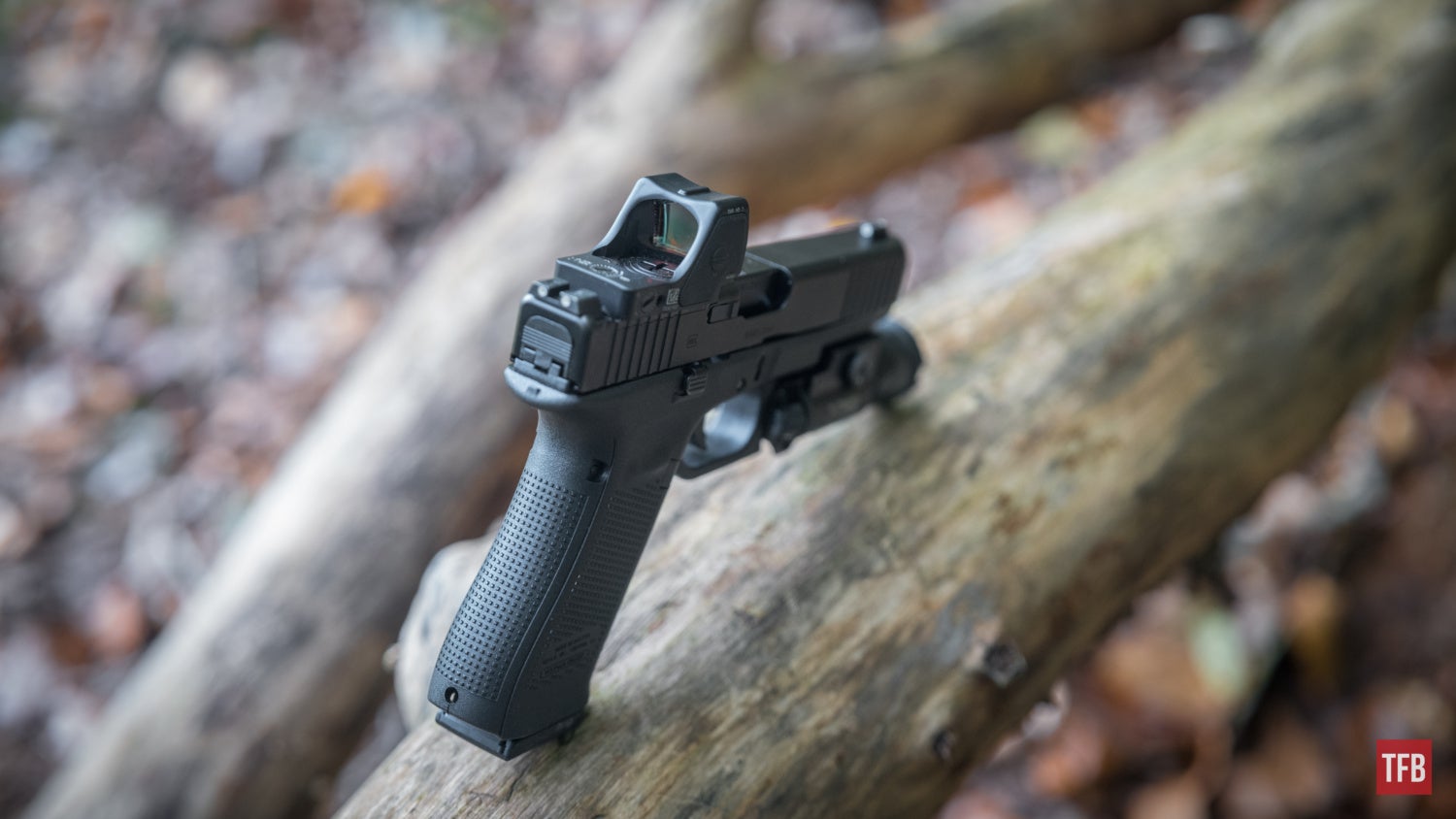
TFB REVIEW: The Trijicon RMR HD Red Dot Sight
Trijicon RMR HD – All Features
Top Loading Battery
Instead of having to remove the optic from the weapon to change the battery, the RMR HD uses a top-loading screw plate for quick swaps without the need to re-confirm a zero.
Forward Looking Light Sensor
The sensor gauges the brightness of the target while in auto mode and will adjust the brightness of the reticle to compensate for darker or lighter environments to prevent washout or blooming. This is especially useful when in dark environments and switching to a weapon-mounted light.
Windage and Elevation Adjustments
Firmer clicks with audible feedback for adjusting windage and elevation without the need for tools.
RMR Footprint
If your pistol can accept the legacy RMR optic, it will accept the RMR HD optic. Trijicon does not recommend mounting the RMR HD on a pistol where the optic hangs over the chamber.
Indexing Ridge
Picking up the dot and/or the backup sights is easier and faster with the index ridge alignment aid on the top ridge of the RMR HD
Lock-out/Lock-In for Buttons, Brightness
Auto-brightness can be locked-out for an optimal EDC setup. Brightness settings can be locked-in to a user’s specific setting.
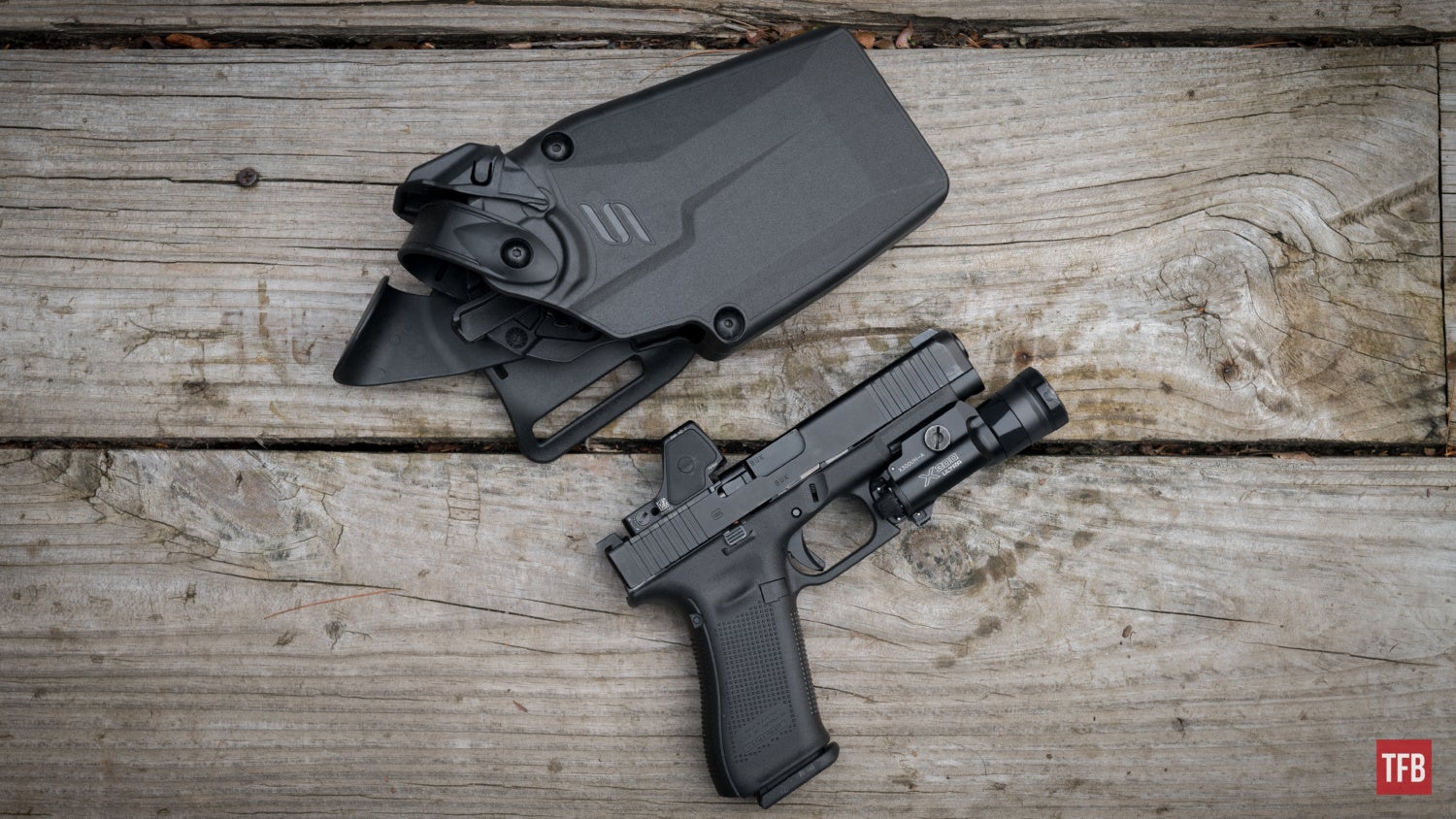
TFB REVIEW: The Trijicon RMR HD Red Dot Sight
RMR HD – Buttonology
With only two buttons (+ and -), accessing the administrative and operational features is achieved by a series of single or double clicks. The below Trijicon RMR HD Buttonology chart is handy when you first start using the optic. It seems a bit complicated on paper, but the settings become almost reflexive with a bit of practice. Without going through the whole chart step by step, adjustments are made with timed button presses that can switch between the dot, dot and a reticle, brightness response and a reticle relative brightness compared to the dot. If you are unsure of your settings, press an hold the two buttons for 20 seconds and release when you see the flashing dot to return to factory settings. From here, you can setup the RMR HD to meet your needs.
![]()
Reticle measurements are usually more helpful for magnified optics on long guns for target size and range estimation, but the below reference chart is actually helpful to understand more about the sight picture.
![]()
RMR HD – The Reticle
Photographing red dots and optic reticles in general is tricky – maintaining focus and brightness in a small window (pun intended) isn’t easy. Below I attempt to show the reticle size, brightness and, variability between the dot and the surrounding reticle.
This is the option for a brighter dot with a dimmer surrounding reticle.
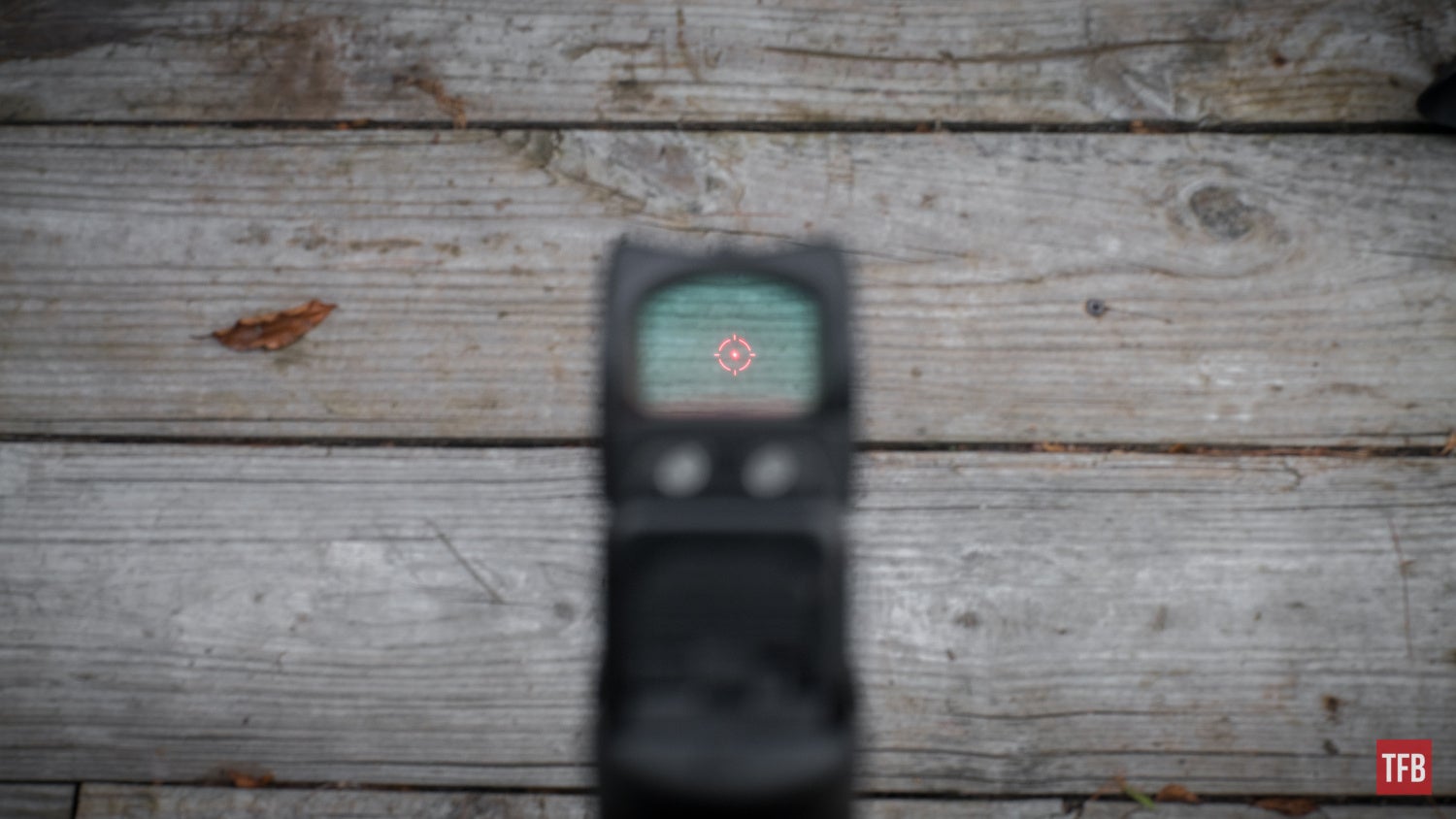
TFB REVIEW: The Trijicon RMR HD Red Dot Sight
This is the standard option for matching brightness between the dot an reticle.
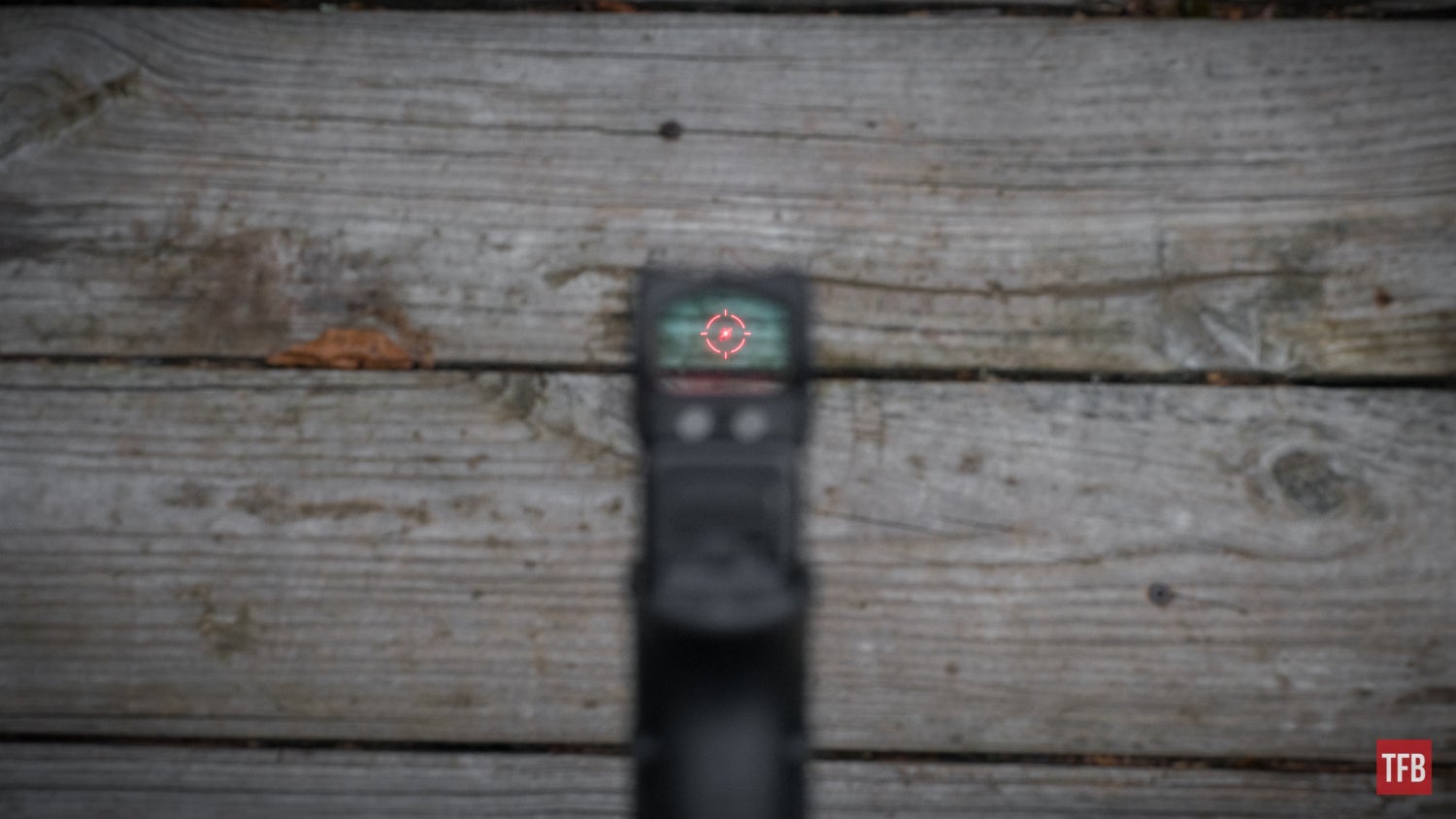
TFB REVIEW: The Trijicon RMR HD Red Dot Sight
And I attempted to capture the brightness transition from a dark target area and a light target area but my camera just adjusted to the bright background instead of the reticle itself. I’ll talk more about the auto-adjusting feature in the final thoughts section below, but it does work as advertised and the transition time is nearly instantaneous.
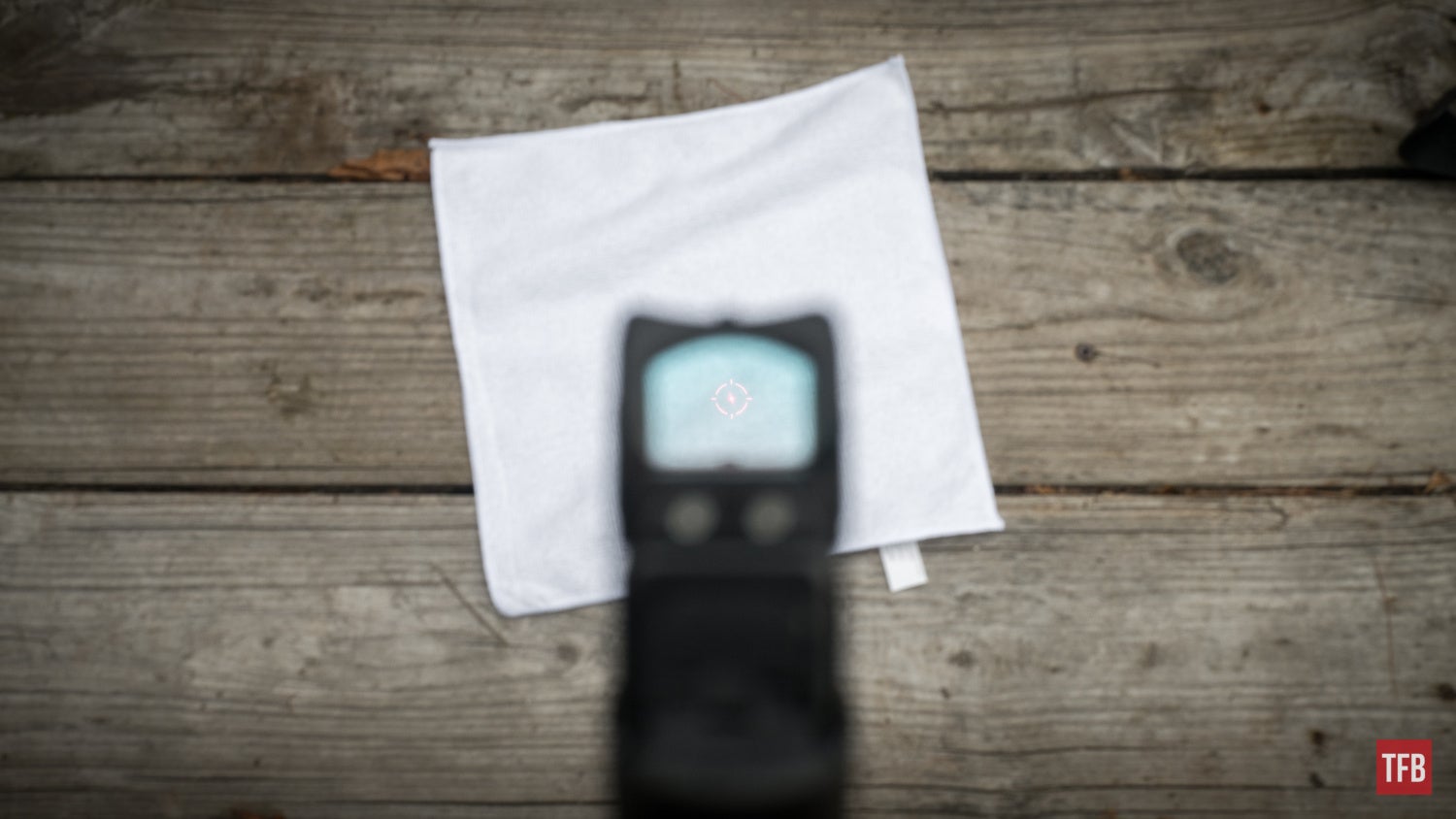
TFB REVIEW: The Trijicon RMR HD Red Dot Sight
Training With Slide-Mounted Optics
It’s fitting that we are discussing training with slide-mounted pistol optics with the Trijicon RMR HD. Developed by the founder of Trijicon, the Bindon Aiming Concept (BAC) utilizes a two eyes open aiming technique to overlay the dot or reticle on the target. If you don’t already do so, I strongly suggest that you train using two eyes to aim with EDC or duty pistols.
We can debate the open emitter versus enclosed emitter MRDS pros and cons at length, but the reality is that a defensive weapon can and will get dirty or disabled at some point in your EDC life. Fortunately, we can compensate for these failures with a solid set of backup suppressor height sights and with training. If you carry a pistol with an MRDS, I suggest taking a course specifically designed for defensive pistol shooting with a red dot optic.
One of the biggest misconceptions is that if the optic is occluded, all you are left with is point shooting. Returning to the BAC two eyes open technique, a forward obstructed optic will still display a reticle as seen by your dominant eye and the target will be viewed by the other eye, just slightly out of focus. You can train for this type of malfunction using some painters tape across the front of your RMR HD.
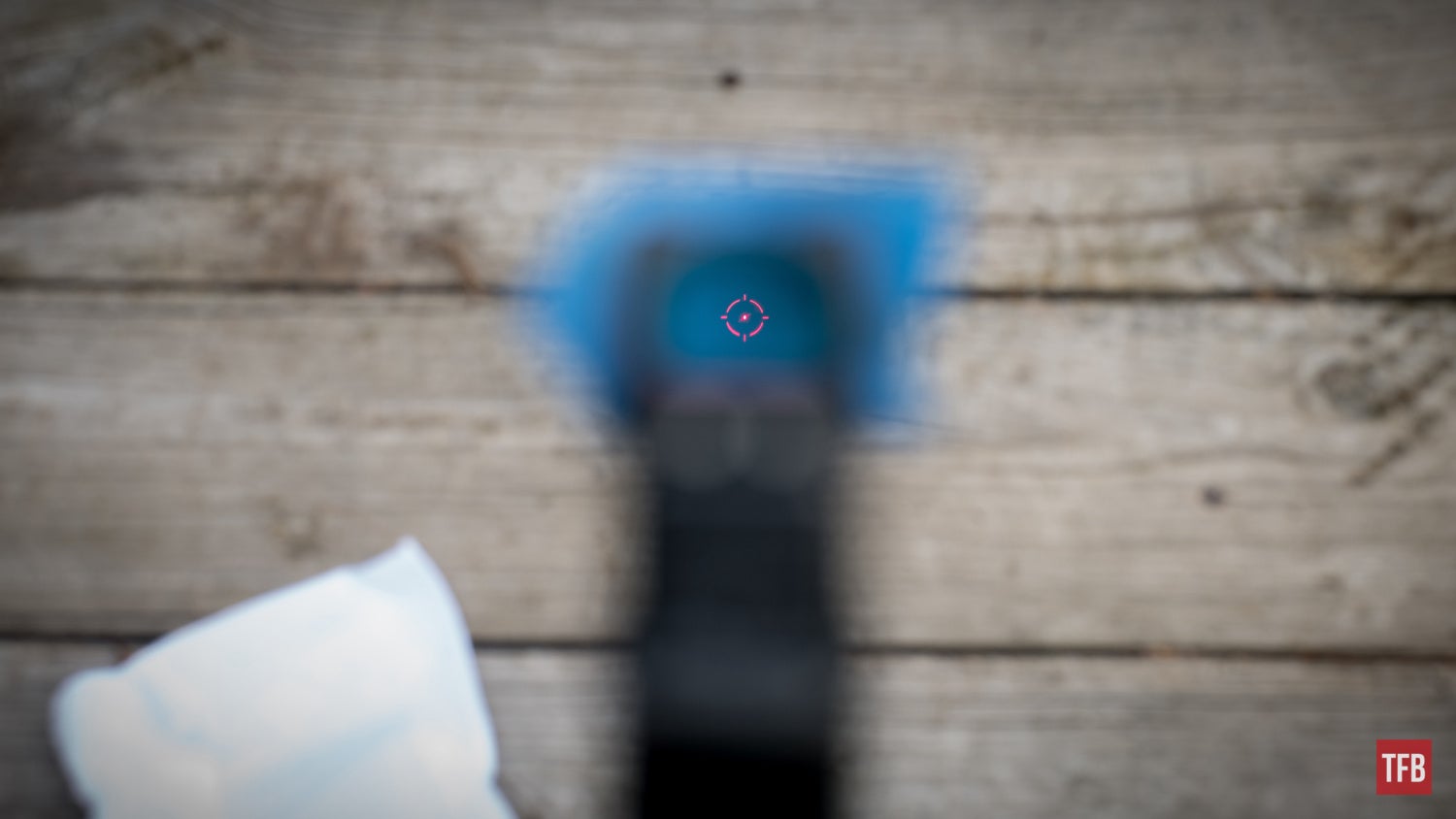
TFB REVIEW: The Trijicon RMR HD Red Dot Sight
The situation is a little more difficult when the back part of the window is obstructed with dirt or debris. Obviously, there will be no visible reticle and the backup sites will be unusable. One technique to overcome this issue is to use a long edge of the optic or pistol as an in-line iron sight to make aimed shots. Trijicon has added an indexing ridge to the RMR HD that can be used to sight the pistol as a backup to any possible dirt or occlusions. Again, train by using some painters tape to cover the optic window from the rear.
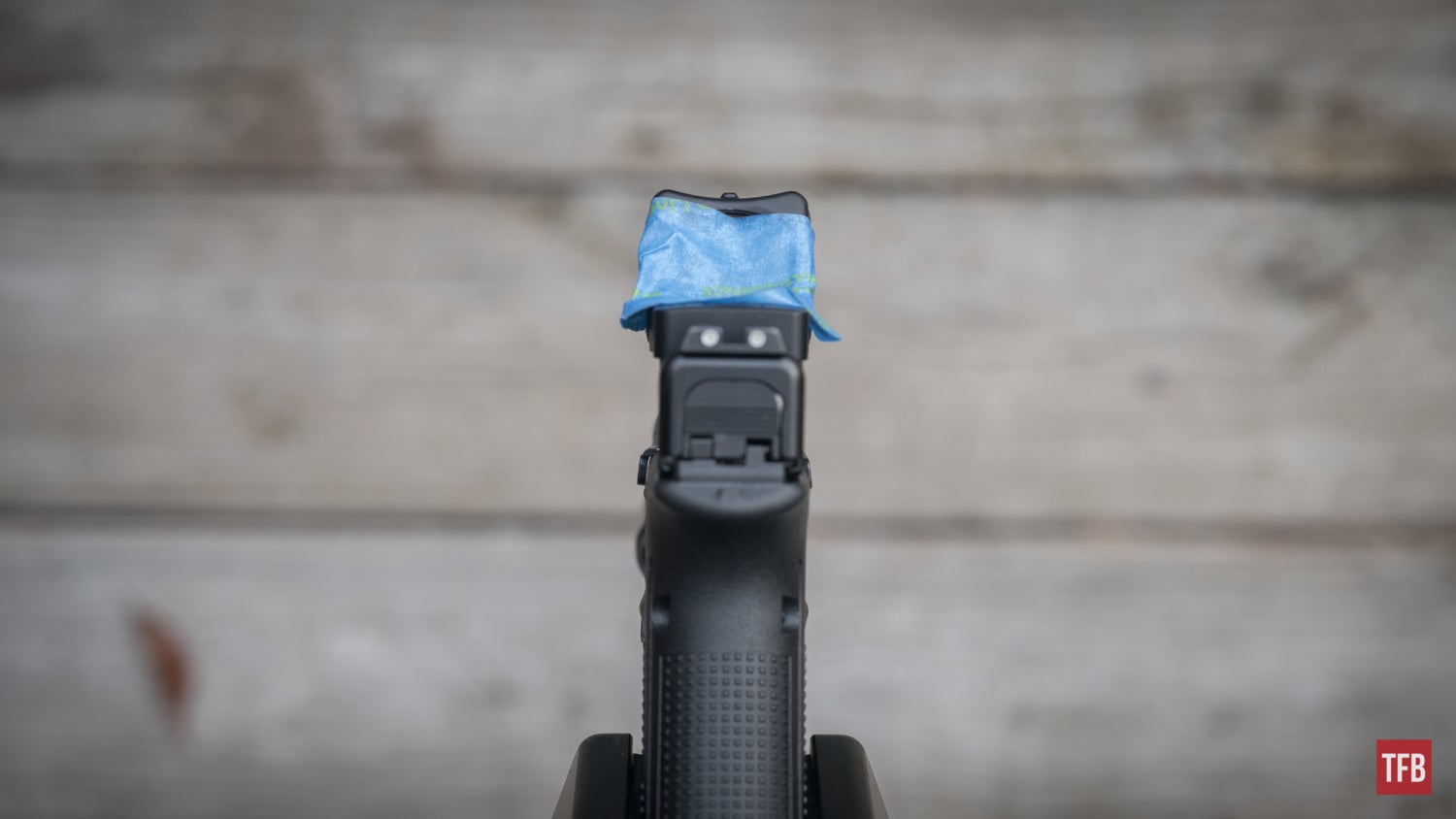
TFB REVIEW: The Trijicon RMR HD Red Dot Sight
Obviously if you forget to turn your optic on or the battery dies, revert to using the backup sight picture that will align through the window of the optic.
Final Thoughts
There will undoubtedly be the arguments that the Trijicon RMR HD debuts features that have been available from other manufacturers for years. Without taking shots at any other products in this category, there is a reason why my duty guns use Trijicon dots, even when it means passing up free issued gear and spending my own money on personal gear. Similar to the iPhone versus Android debate, thoughtful progress takes time and testing and Apple won’t release something until it is actually ready for primetime. My gut feeling is that Trijicon operates the same way – these features need to be fully researched and tested before they are put into production, even if it means not being the first company to make a feature release.
I was skeptical of the circle and dot reticle before heading to the range. My assumption was that it would make for a crowded sight picture and be slower to take aimed shots. On the contrary, I found the bright segmented circle and a dimmer dot to be the sweet spot for me, allowing for a quick acquisition and smoother shot.
The button adjustments take some familiarization to make adjustments without the Buttonology card. Part of me wishes that there was a third button to make selections, but two buttons also keeps everything simple.
I have one minor frustration and I am not sure if it is directed at Trijicon, Glock, or someone in between. Trijicon includes one set of screws with the RMR HD and GLOCK provides optic mounting plates and another set of screws. Neither sets of screws allows the mounting of the RMR HD to the GLOCK MOS without a third set of screws ordered from Trijicon. I wish that either the pistol or the optic would come with the correct screws for mounting, but I get that both manufacturers can’t provide screws for every mounting combination expected from every user.
The Trijicon RMR HD is a feature-rich MRDS that can adapt to a shooters lighting environment and withstand heavy duty use and still provide reliable service for years on a single battery. This is a worthy upgrade to any duty or EDC pistol and I am looking forward to putting mine into full-time service soon.
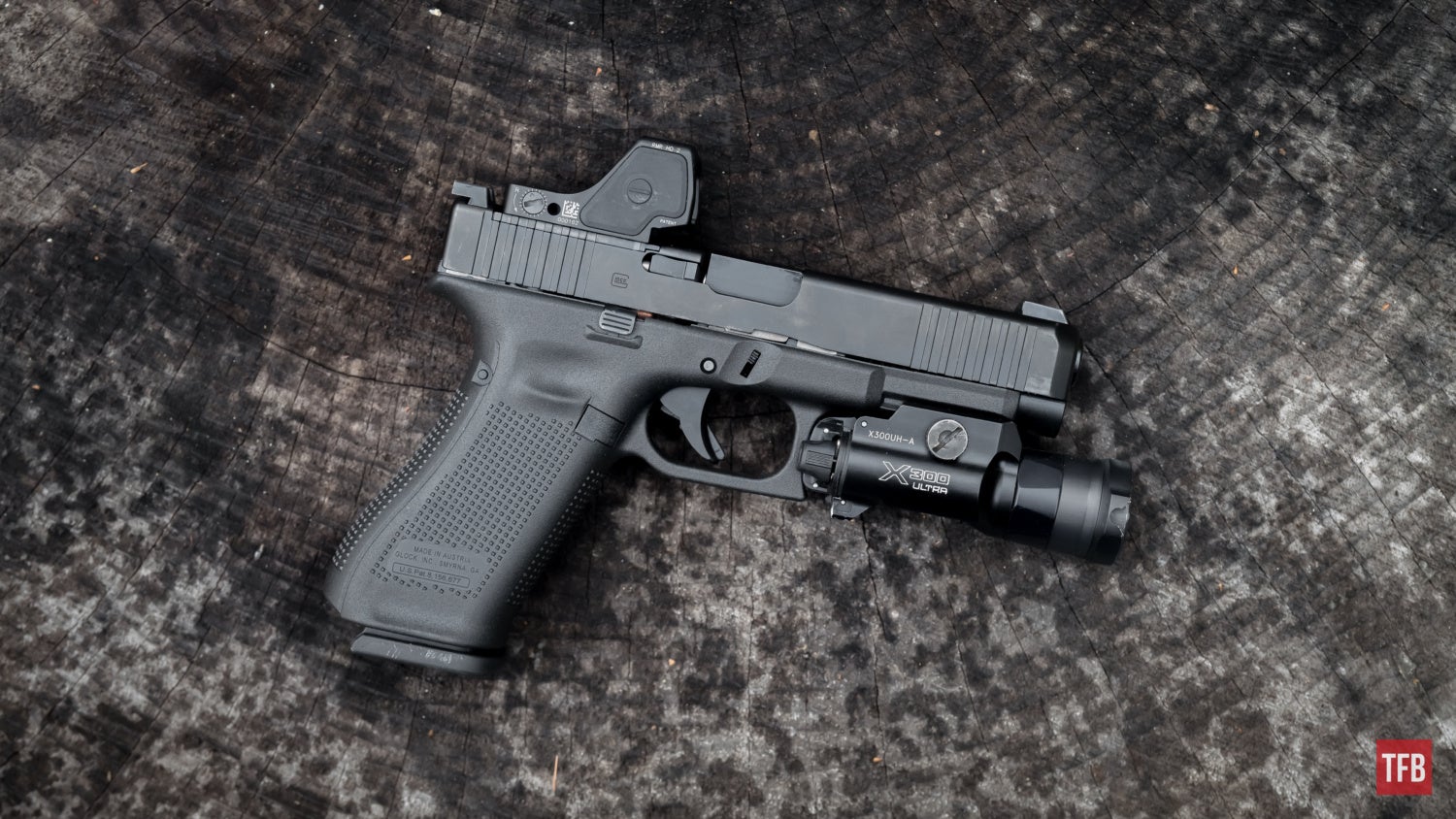
TFB REVIEW: The Trijicon RMR HD Red Dot Sight
 Your Privacy Choices
Your Privacy Choices
